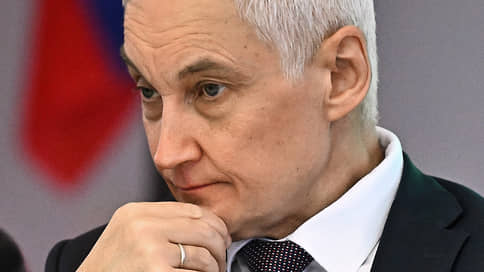Thought with a limitation on flight altitude – Newspaper Kommersant No. 61 (7506) dated 04/10/2023
[ad_1]

As Kommersant found out, the government has formed a list of important areas of technological development of the Russian Federation until 2030. It includes ten “end-to-end technologies”, the list of which was revised at the end of 2022 due to the loss of access to sophisticated imported equipment and the loss of relevance (these are quantum computing, AI and others), as well as eight areas of industrial development – their inclusion in the list “High-tech” in the Ministry of Education is explained by the presence of “reserves for success”, however, if the White House previously associated the technological future with world-class breakthrough developments, now half of the initiatives are aimed at repeating existing foreign technologies that are no longer inaccessible to the Russian Federation due to sanctions.
When preparing the concept of technological development until 2030, its developers, headed by First Deputy Prime Minister Andrei Belousov, selected 18 areas from the proposals of the Ministry of Economy and the Ministry of Industry and Trade, which the authorities will focus on, Kommersant was told in the Ministry of Education and Science (also involved in drawing up the concept): ” There are already road maps for ten each, eight more are being considered by the government for further development of agreements (with companies that are supposed to be involved in projects for their implementation.— “b”) and “road maps”.
Among the new areas were the production of medicines, nuclear and oil and gas engineering, including equipment for the processing of hydrocarbons, the aviation industry and infrastructure for air transportation, as well as energy engineering and energy services, the ministry said.
These are technological areas, “where now the Russian economy already has certain groundwork for their successful development and the formation of a large market,” the department noted.
The “road maps” on ten “end-to-end technologies”, work on which the White House began back in the pre-war period in parallel with the organization of an investment boom in the Russian Federation to ensure breakthrough economic growth, also went through a “reset” in 2022. Now they include:
- artificial intelligence (AI);
- modern and prospective mobile communication networks;
- quantum computing;
- quantum communications;
- new industrial software;
- new system-wide software;
- energy storage systems;
- hydrogen energy;
- advanced space systems and services;
- technologies of new materials and substances.
In total, there are 12 “end-to-end technologies” in the updated list: “Genetics” and “Smart Energy Systems” are being developed within the framework of state programs (see Kommersant dated December 30, 2022). The development of some, such as neurotechnologies, was abandoned. “They have ceased to be a priority from the point of view of the business of many countries, including the Russian Federation, so everything related only to AI has remained in the road map,” a source close to the Ministry of Economy explained to Kommersant (see help). However, in many respects the evolution of the list is also better explained by the isolation of Russian science and the inaccessibility of advanced equipment, which forced the authorities to divide the former ambitious goals into unrealizable in the near future (they left the list) and partially feasible on the base available in the Russian Federation (they were regrouped according to this principle). ).
As a result, the final list of projects turned out to be focused not on breakthroughs, but, as the Ministry of Economy notes, on ensuring “technological sovereignty” – in particular, in the areas of the aviation industry (including drones), robotics, automotive, microelectronics, medicine and others.
The concept of technological development, including this list, will be considered at a strategic session with Prime Minister Mikhail Mishustin in the near future, the Ministry of Education and Science told Kommersant, adding that in April the document will be officially submitted to the White House for approval. .
Thus, in the next seven years, in the technological development of the Russian Federation, de facto, it is mainly proposed to engage in “catching up” import substitution – the development of telecom equipment after the departure of Ericsson and Nokia, industrial software (instead of SAP, Oracle, etc.), aircraft manufacturing – after the failure of supplies and maintenance of Boeing and Airbus, power engineering – instead of the main supplier Siemens Energy. The inclusion of pharmaceutical technologies in the “breakthrough” ones is also explained by the suspension of work in the Russian Federation of the manufacturer of raw materials for medicines BASF, in the extraction and processing of oil, it is dictated by the curtailment of the activities in the Russian Federation of technical leaders of oilfield services Halliburton and Baker Hughes and the sanctions inaccessibility of the purchase of foreign refineries. At the same time, the degree of separation of “sovereign development” from the world by 2030 will be largely determined not by the speed of the reinvention of aircraft and turbines in the Russian Federation, but by how far the world’s advanced technologies will go during this time.
[ad_2]
Source link






